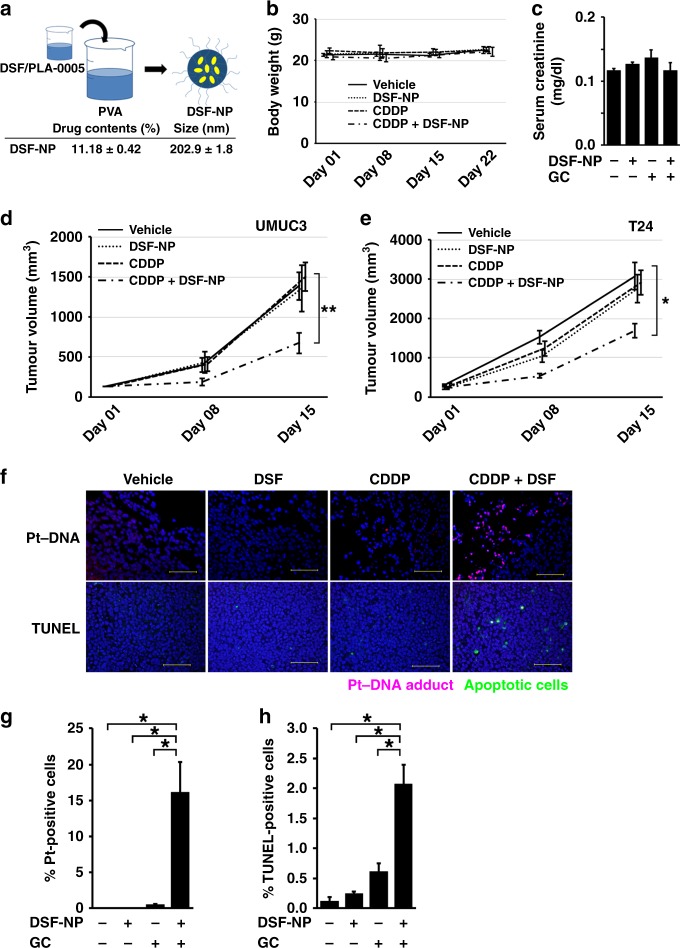Fig. 3.
DSF–polylactic acid (PLA) nanoparticles (DSF-NP) enhance the inhibitory effect of cisplatin treatment in mice. a DSF micellar PLA nanoparticles (NP) were prepared via emulsion-solvent diffusion method by using polyvinyl alcohol (PVA). b, c Tolerability of the combination regimen. Seven-week-old female athymic mice (n = 3) were treated with CDDP (4 mg/kg i.v.) and/or DSF-NP (3 mg/body i.v.). Body weights were measured once a week (b), and serum creatinine levels were measured 1 week after administration (c). d, e Tumour growth rate in the subcutaneous UMUC3 (d, n = 5 for each group) or T24 xenograft models (e, n = 3 for each group). Tumour-bearing mice were treated with vehicle, DSF-NP (3 mg/body i.v.) alone, CDDP (4 mg/kg i.v. for UMUC3 and 3 mg/kg i.v. for T24) alone or CDDP in combination with DSF-NP. *p < 0.05, **p < 0.01 (CDDP + DSF-NP vs. single treatment). f Formation of Pt–DNA adducts (top row, red) and apoptosis (bottom row, green) in tumour cells of UMUC3 xenografts as in d detected by anti-Pt–DNA-adduct antibody (day 1) and TUNEL assay (day 15), respectively. Bars indicate 100 μm. g, h Quantitative analysis of Pt–DNA-positive cells (g) and TUNEL-positive cells (h) in tissue sections from tumours shown in f. Three randomly selected microscopic fields were quantitatively analysed with Image J. *p < 0.05

